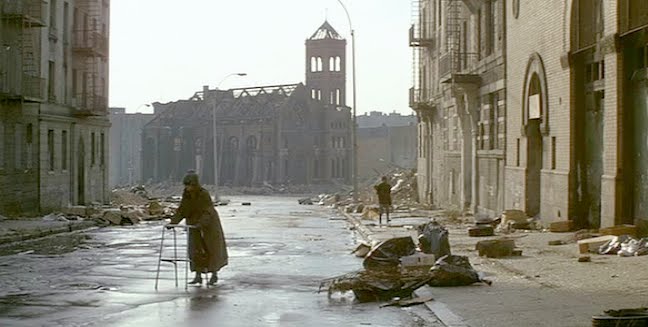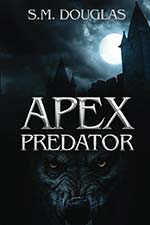When we think of a genre of books or films that include a message about social and political issues we often think of science fiction. As well we should. Gene Roddenberry’s Star Trek (and its progeny) is widely praised for this reason, but it is of course far from alone in this regard. Nevertheless, what many people frequently dismiss is that horror has not only offered a great way of exploring contemporary issues within our society; but continues to do so as well. This month I want to take a look at one such modern example provided from within the context of the werewolf.
It’s been nearly forty years since the publication of Whitley Strieber’s novel The Wolfen, and the subsequent theatrical adaptation that followed in 1981. Both remain great examples of using fictional horror as a medium for shining light on real social and political issues. Now astute readers will remember that well over one year ago I singled out The Wolfen as one of the all-time great werewolf books. And before my email blows up please note that I understand the creatures in the Wolfen are not actual werewolves. Nevertheless because of the manner in which they are presented as having near human intelligence I have chosen to rank them as werewolf equivalents.
In my previous review I focused on what made The Wolfen such a damn scary book, including, and as I wrote, because Strieber choose to “craft his creatures as a scientific and thus logically explainable part of nature’s evolutionary process”. However, not only does this hold true in the sense of imbuing his work with a greater fear factor, but it also allowed Strieber to bring the reader into a conversation on conservation (thought I would throw a little Dr. Suess style Fox in Sox alliteration at ya to keep you on your toes).
This is unique for a number of reasons. Not least of all because when werewolves are used as a vehicle to explore more meaningful issues relating to the human existence, then it is most commonly as a window into the beast within – and both our own and societal pressure to tamp down inherently human urges that lend themselves to a sexual or violent nature.
Strieber throws all that out the window. Remember his werewolves are not cursed humans (which prior to his writing in the late 1970’s was pretty much the uncontested story line on werewolves), but are sentient beings of a highly intelligent nature that evolved alongside humans as a peer competitor. And by spending ample time within the wolfen’s viewpoint Strieber uses this juxtaposition between these two apex predators to show that there could be a different path forward for humans in relation to how they interact with their surrounding environment. In this case by not continuing to bludgeon the natural world into submission, but via learning, like the wolfen, to co-exist with nature and all of its creatures. This is all subtly done, which is one of the reasons it is so effective. It takes several readings to hone in on this argument and even then it is tough to get past the intense pacing and terrifying elements that make The Wolfen such an effective horror novel. Enter Hollywood.
The film version of The Wolfen (initially stemming from a collaboration between screenwriter David Eyre and director Michael Wadleigh) takes the subtext of exploring man’s interaction with the natural world and, as Hollywood is wont to do, puts it on steroids. Is this bad? Yes and no. Some of what made the book so effective is lost, including the horror elements that are all too often pushed into the background in the film adaptation. On the other hand the way that the film advances the book’s underlying thesis is still quite entertaining without being over the top. Albeit a fine line is walked – one that at times falters into a schlockiness apparent to modern viewers in ways the book is not.
In terms of thrusting social and political issues to the forefront the film Wolfen goes out of its way to show how badly man had managed his surrounding environment. The picture I have inserted here from the film is entirely emblematic of the director’s quest to convey the bleak nature of existence for many humans, and the outcome humanity may be facing if it doesn’t get its act together.
If nothing else the film is a political statement on the failings of neoliberalism – with New York City exhibit A in this regard. The city is shown in stark, depopulated, destitute terms that presents man at his worst. For those of you accustomed to today’s glistening comparatively safe New York City it is quite shocking to see images more redolent of failed rust belt cities (like my hometown Detroit). Incidentally the image above is from the South Bronx. The skeletal church in the background was built for the movie, and yet fits right in among the devastation in the foreground. For many New Yorkers (i.e. non-elites) this was the reality of life in the city during the late 1970’s and early 1980’s.
To be fair by 1981 New York City, including the South Bronx was just beginning its renaissance from these depths. Nonetheless, this image captures the larger post-apocalyptic feel of the city. In addition, the Wolfen was far from special in its dim view of life in the city, countless television and film representations of New York City during this era cast it as a lawless war zone. With 1981’s Escape From New York perhaps the most extreme example (there’s that year again – 1981). There is also a scene in Strieber’s book that does the same kind of thing. But it’s a small part of a novel whose primary focus is on driving home the horror of being stalked with nowhere to go for help even when surrounded by other people (offering another contrast to the empty feel of the movie).
Moreover, the movie uses imagery such as that seen above to make a point. The film repeatedly goes out of its way to illustrate the predations of capitalist elites (a precursor of today’s focus on the “one percent” and the widely acknowledged detrimental impact of widespread inequality) on the rest of us; with the South Bronx ground zero for this war humanity is waging upon itself. Today it would be almost unimaginable to find such a stinging rebuke of capitalism in a horror movie, no less what became a successful one at that (as part of 1981’s “year of the wolf“). The Wolfen is at best an uneven film. Regardless, the book’s excellence and film’s attempt to say something more offers inspiration for anyone interested in leveraging horror as a genre for addressing humanity’s place and role on this planet.


Leave a Reply